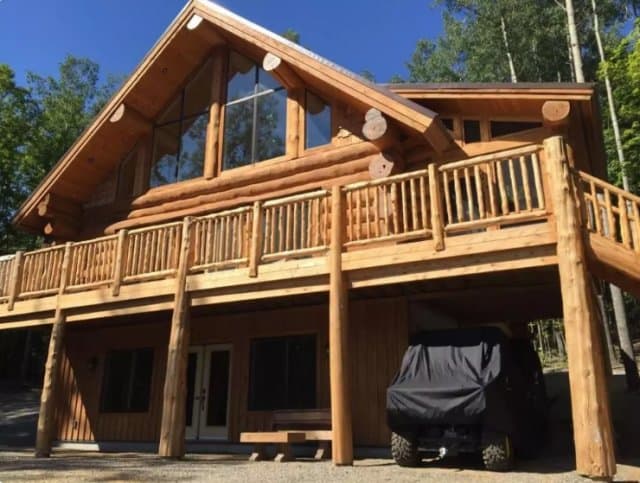Log homes are more than just buildings. They are the embodiment of a lifestyle, your rustic dream becoming reality. No one can deny the enchantment of living in a home made of inherently wonderful, natural wood. But, to hold that dream without it spiraling into a nightmare of exorbitant costs, definitely the exterior proper maintenance is required. The different elements might not be very kind to wood, but when you follow the same approach regularly and are proactive, you can be sure that your log home will remain a gorgeous and durable refuge for many years to come
This step-by-step guide will cover all the essential 2025 log home exterior maintenance tips that will help you keep the investment of your home maintained and great looking for a long time.
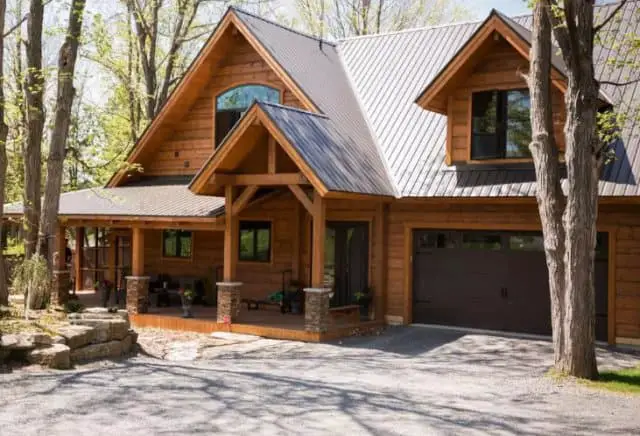
The Cornerstone of Care: Regular Inspections
Among all the preventive measures that the owner of a log house can adopt, the best and most efficient one is regular inspections. Being a bit watchful will save you loads of not only money but also time in the future. Walk around your home not less than twice a year, once in the spring and once in the fall; be quite specific in such walks as you look for any signs of trouble.
What to Look For:
- Cracks and Checks: Wood beings are in nature start to get cracks known as “checks” in the process of aging and drying. By considering that most of them are harmless, you need to check if there are any bigger ones that face upwards (which can lead to water collection) or extend along the log completely.
- Discoloration: These dark lines or spots on logs may turn out to be the signs of steam injuries or the presence of mildew. Stain that has faded or partially peeled is clear evidence that your wood needs repainting.
- Rot: Use a screwdriver or an awl to poke any suspicious spots, particularly those on the lower logs near the ground, gently. If the wood feels soft and spongy, then it is a case of rot that requires you to fix it as soon as possible.
- Pest Infestations: Tiny holes in the logs, sawdust-like frass, or the presence of insects might be some of the signs to look for. Carpenter bees, termites, and powderpost beetles are the usual suspects.
- Failing Caulk or Chinking: The sealant that is between your logs is the smallest barrier against the elements. Look for spaces, cracks, or places where it is separating from the wood.
A thorough inspection checklist can make a lot of your work easier. Also, taking photos of the problem areas is a reliable way to keep an updating record of the issues.
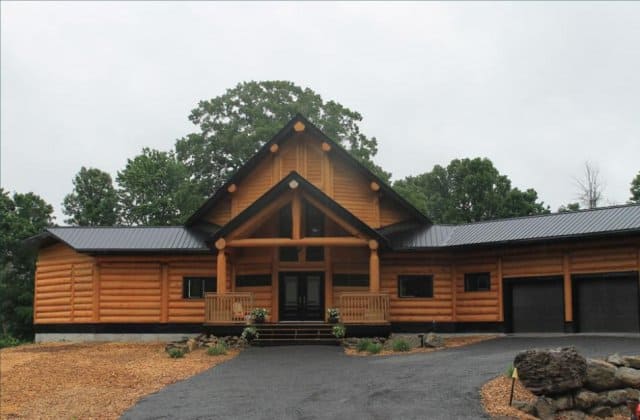
A Clean Home is a Happy Home: Washing Your Logs
Though, pollen and dust brush, and mildew will accumulate on your timber home over time. Such a buildup is more than just an eyesore that can also hold moisture against the wood and facilitate the premature breaking down of the stain. A light wash every couple of years will not only keep your home looking lively but will also prolong the finishing on your home.
How to Safely Clean Your Log Home:
- Choose the Right Cleaner: Bleach is the first that comes in mind when thinking of a strong cleaning agent but it is not suitable for the wood and the stain. Go for a specially made log home cleaner or a mild soap and water solution.
- Gentle Washing: Using a pressure washer is possible but it has to be done with the utmost caution. Low-pressure (500-1000 PSI), a wide-angle fan tip, and thus not allowing the nozzle to be too close to the wood should be used. The purpose is to rinse the logs gently rather than to blow away. In a safer way, a garden hose attached with a scrub brush on an extension stick can do the work nicely.
- Rinse Thoroughly: After washing, you need to rinse the logs to get rid of any soap residue.
- Allow to Dry: Log spaces should be as dry as possible if you are to apply a new stain or sealant. This takes a couple of days depending on the current weather.
Protecting Your Home from Pests
Insects are the last thing you would want in your gorgeous log home but unfortunately, they see it as a treat of a lifetime. Pest control is a must-have in the log house maintenance package.
- Carpenter Bees: The carpenter bees start drilling half of a round one-inch holes in your logs to lay their eggs in it. Fix any holes you find and then spray the wood with a borate-based insecticide for at least 3 years to keep the bees from coming back.
- Termites: Besides this extremely dangerous pest that usually brings a great deal of harm, look for small mud incursion on your foundation or hollow wood spots. If you think that there is a termite infestation, hire a professional to treat it for you.
- Powderpost Beetles: They are the ones who are responsible for these pinholes that look like tiny holes in wood. Again, just like with termites, a borate treatment will also work to get rid of these pests.
If you want to be safe from one of the major causes of wood decay (fungi) as well as a host of wood-boring insects, you only have to reapply a borate-based preservative on your logs every few years.
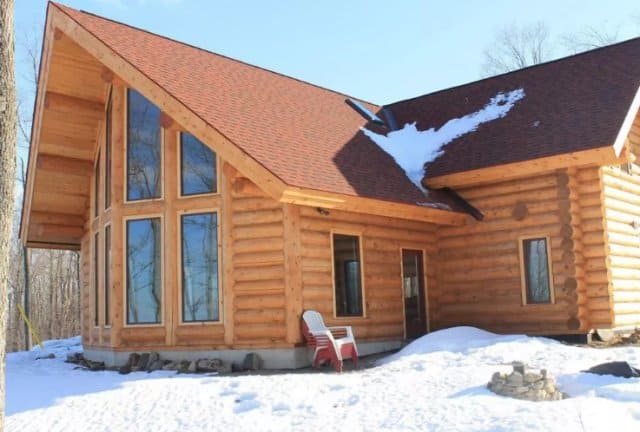
Sealing the Gaps: Caulking and Chinking
The spaces between the logs in your house are either sealed with caulk or chinking to create a barrier against the weather. This sealant, however, over time can shrink, crack, or pull away from the logs, thus allowing water and air to get into your home.
Check your caulk or chinking yearly. If you see any, damage, carefully remove the old sealant and put on a new, high-quality log home caulk. Leakage will not only prevent water from getting into your logs but also save you money on heating and cooling.
The Shield of Your Home: Staining and Sealing
The stain on a log home is equivalent to the first line of protection against the sun’s UV rays and moisture. Eventually, this protective layer will be less effective and will needed to be reapplied. The amount of re-staining that will be necessary depends on the climate, the type of stain, and the amount of sun exposure your home gets.
Typically, a good quality stain can serve its role for between 3 and 7 years. Look for signs that it is time to reapply, such as the color fading, water stops beading on the surface, or the grain of the wood that looks dry and weathered.
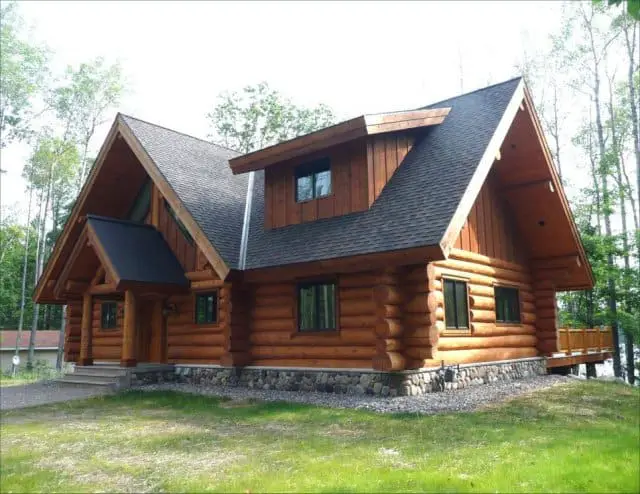
Embracing the Seasons: Seasonal Checks
Log homes can change and settle with the seasons. These slight movements are completely normal, but they can sometimes cause new maintenance requirements.
- Spring: After the winter thaw, check for any damage from snow and ice. A thorough cleaning can be a perfect use of this time.
- Fall: Make sure that the gutters are clean, the drainage is working well, and the house is well-sealed to avoid letting the heat out before the cold winter sets in.
By thoroughly performing these log home exterior maintenance tips,you are a long way to keeping the woodsy charm and beauty of your log home for many years to come. Prevention is much better than cure and doing just a little bit of work each year will keep the life and beauty of your log home at their maximum.
Source – ktloghomes.com
